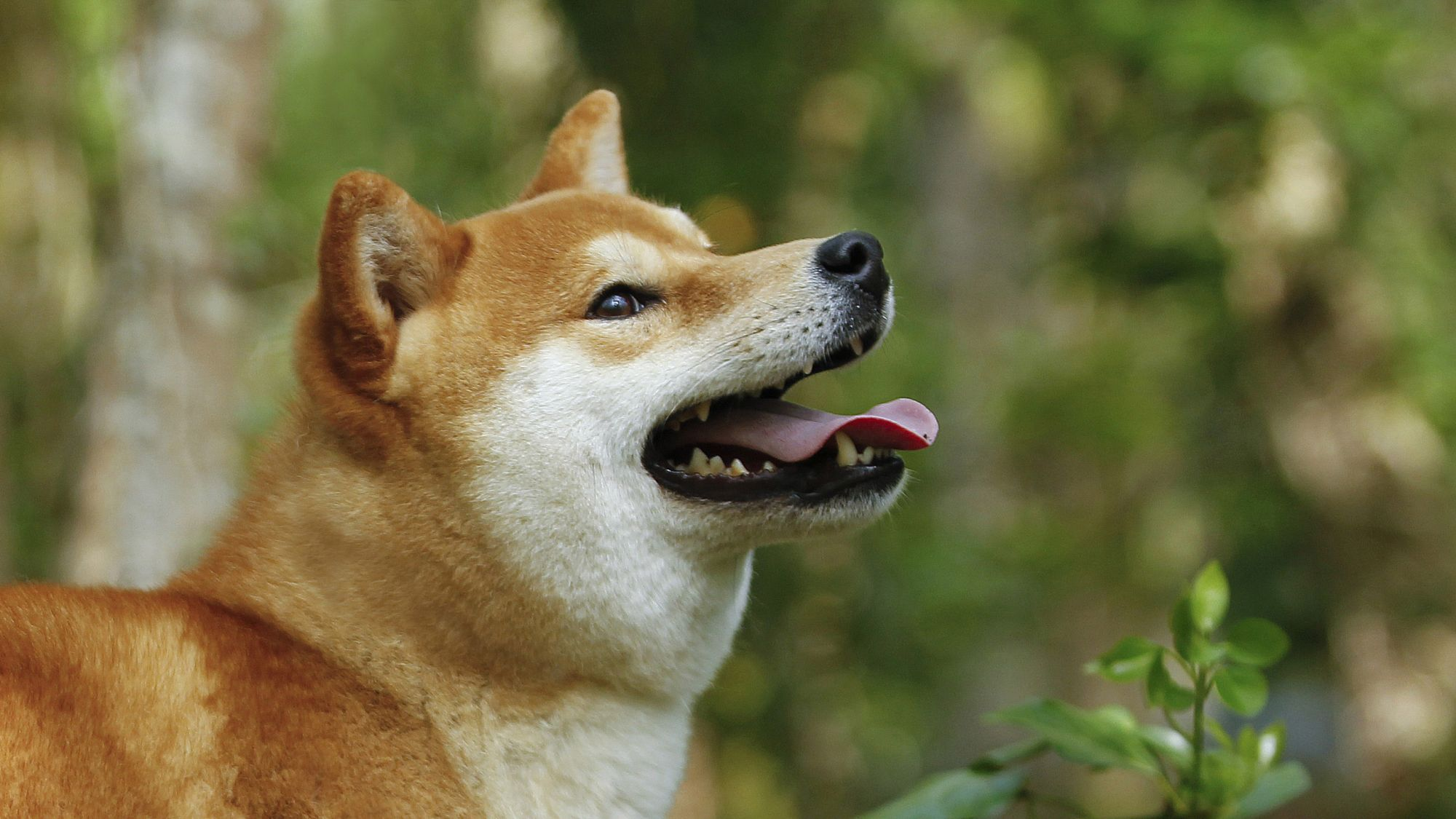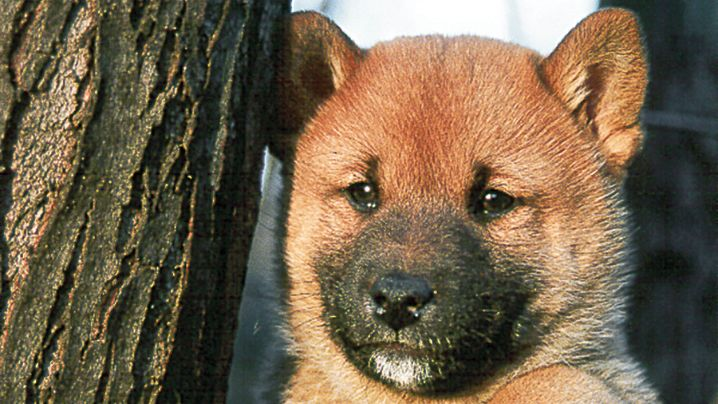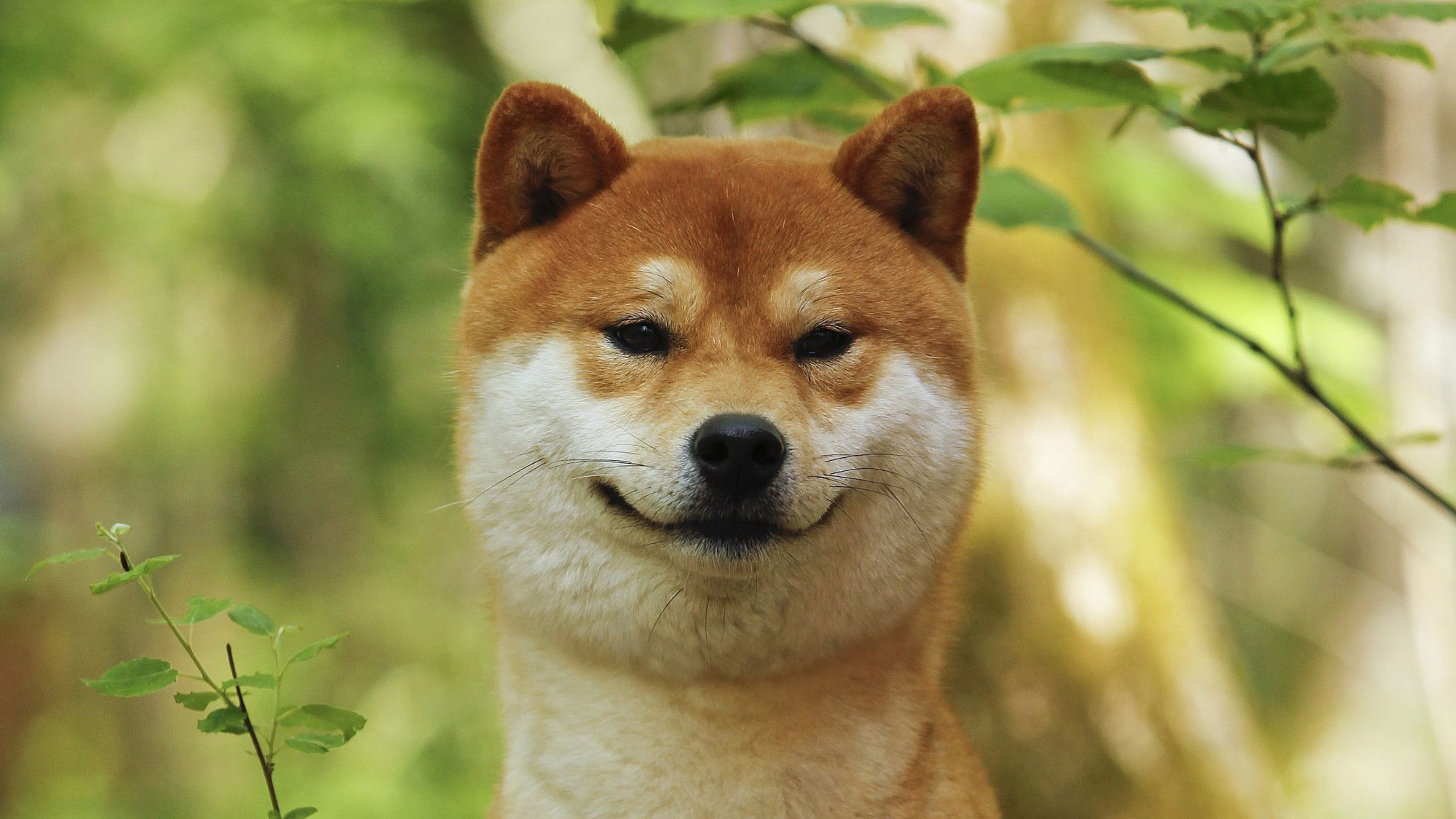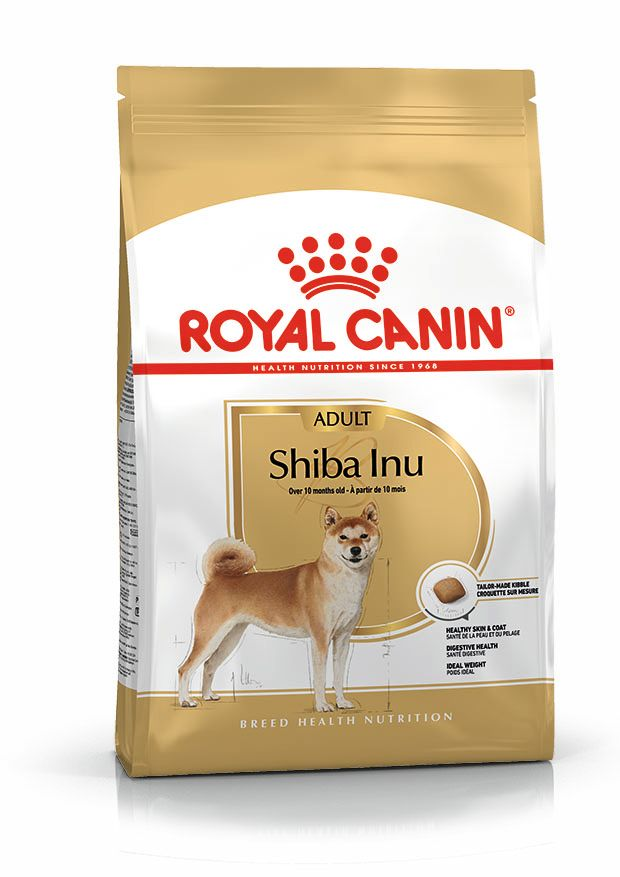Shiba Inu - Breed Facts & Characteristics
Once bred as hunting dogs in their native Japan, Shiba Inus are now prized as a “national monument”. Clever, independent and quick on their feet, Shibas are sometimes compared to cats thanks to their confident, you-need-me-more-than-I-need-you demeanor. However, with early training and socialisation, a Shiba Inu makes for a deeply loyal family member.
Official name: Shiba Inu
Other names: Shiba
Origins: Japan
Tendencia a babear
{score 0 out of 5}Necesidades de aseo
{score 0 out of 5}Nivel de muda de pelo:
{score 0 out of 5}Tendencia a ladrar
{score 0 out of 5}Nivel de energía
{score 0 out of 5}Compatibilidad con otras mascotas
{score 0 out of 5}¿Clima cálido?
{score 0 out of 5}¿Clima frío?
{score 0 out of 5}Apto para vivir en departamento
{score 0 out of 5}Puede quedarse solo
{score 0 out of 5}¿Mascota familiar? *
{score 0 out of 5}
| Macho | Hembra |
|---|---|
| Altura | Altura |
| 35.5 - 40.5 | 33 - 38 |
| Peso | Peso |
| 10.5 - 11.5 | 7.5 - 8.5 |
| Cachorro | Adulto |
|---|---|
| 2 to 12 months | 12 months to 7 years |
| Madurez | Adulto mayor |
| 7 to 10 years | 10 to 20 years |
| Bebé | |
| Birth to 2 months | |
Tendencia a babear
{score 0 out of 5}Necesidades de aseo
{score 0 out of 5}Nivel de muda de pelo:
{score 0 out of 5}Tendencia a ladrar
{score 0 out of 5}Nivel de energía
{score 0 out of 5}Compatibilidad con otras mascotas
{score 0 out of 5}¿Clima cálido?
{score 0 out of 5}¿Clima frío?
{score 0 out of 5}Apto para vivir en departamento
{score 0 out of 5}Puede quedarse solo
{score 0 out of 5}¿Mascota familiar? *
{score 0 out of 5}
| Macho | Hembra |
|---|---|
| Altura | Altura |
| 35.5 - 40.5 | 33 - 38 |
| Peso | Peso |
| 10.5 - 11.5 | 7.5 - 8.5 |
| Cachorro | Adulto |
|---|---|
| 2 to 12 months | 12 months to 7 years |
| Madurez | Adulto mayor |
| 7 to 10 years | 10 to 20 years |
| Bebé | |
| Birth to 2 months | |

Get to know the Shiba Inu
All you need to know about the breed
Only recently introduced to the West in the middle of last century, Shibas have quickly become a favoured companion. Often taken for foxes thanks to their agile gait, triangular, pointed ears and alertness, Shiba Inus ooze confidence through their steady, placid gaze.
Once used to flush out game in the mountains of their native Japan, Shiba Inus are a small, well-proportioned, all terrain breed that also happens to enjoy the indoor life. Still, they need a good romp outdoors, and, because they have a strong prey instinct, it is highly recommended they be kept on a lead. These little Houdinis can find their way out of most situations – and once they’re off, they’re well and truly off!
Shiba Inus express themselves in a variety of behaviours including intriguing, if not double-take inducing “vocalisations” that have been compared to yodeling. The takeaway: with Shibas, there’s rarely a dull moment.
Because they are strong-willed and clever, early training and socialisation are key in successfully raising this confident breed. Naturally territorial, a Shiba quickly appropriates things and people. They should be taught to share from the earliest age. With the right training, Shiba Inus grow up to be devoted to and protective of their humans.

2 facts about Shiba Inus
1. Don’t call it a comeback
Though not officially named the “Shiba Inu” until the 1920s and still a relative newcomer to the West, Shibas are anything but new. This prized breed has been around for more than nine thousand years. In fact, depictions of Shiba-like dogs have been found in primitive Japanese drawings dating back to 300 B.C.
2. Saved from the brink
There were originally three types of Shiba Inu native to Japan: the San-in, Mino, and Shinso. Sadly, the violence of World War II and a subsequent outbreak of distemper eradicated too many of the three strains for any to survive in their pure form. Thankfully, major efforts were made to save the Shiba Inu by breeding the three lines together. The result is the Shiba Inu known and adored today.
History of the breed
With DNA tests confirming its presence in the country as far back as 7000 B.C., the Shiba Inu is the oldest of Japan’s six native Spitz breeds. Originally used by hunters to flush out game, some suggest the name “Shiba” is the Japanese word for “brushwood”, a reference to the type of bushes where they hunted. A second theory suggests the name Shiba comes from the colours of the brushwood leaves, which the breed’s coat resembles. And a third idea says that “Shiba” meant “small” in a now-obsolete dialect. In fact, “Inu” is quite simply the Japanese word for dog. In any case, the name wasn’t made official in Japan until the 1920s.
Thanks to campaigning done by breed enthusiasts and NIPPO, the Association for the Preservation of Japanese Dogs, the Shiba Inu was declared a National Monument in 1937. In the mid-18th century, Japan began importing other breeds, crossbreeding the newcomers with native breeds like the Shiba Inu, consequently diluting the latter’s bloodline.
The violence of WWI and a later outbreak of distemper pushed the breed to the brink of extinction. Shortly afterward, programs were established to crossbreed the surviving Shiba bloodlines, giving us the dog that we recognise today.
The Shiba first landed on American soil in 1954, brought over by a US military family; however, the birth of the first U.S. litter in 1979 is widely considered the date the breed was established in the country. Still, the Shiba Inu only gained full recognition from the AKC and UKC in 1992. In the process, the word “inu” was dropped and the breed officially became “Shiba”.
From head to tail
Physical characteristics of Shiba Inus
1.Topcoat
2.Undercoat
3.Face
4.Ears
5.Tail

Things to look out for
From specific breed traits to a general health overview, here are some interesting facts about your Shiba Inu
Allergies aren’t just a human issue
Shiba Inus can suffer from allergies, which fall into three main categories: food allergies, contact allergies, and inhalant allergies. Be on the lookout for signs of the latter, which can include itching, redness and / or hair loss. Should you notice any of these, it’s best to head to your vet as soon as possible so you can find a suitable treatment.
Seek out qualified breeders for healthy hips
It is not uncommon for the Shiba Inu to develop hip dysplasia, an inherited skeletal condition that causes significant pain and / or lameness in the hind legs. Because hip dysplasia is genetically transmitted, it’s vital to find a reputable breeder that can provide you with the necessary health clearances for your puppy’s mom and dad. A physical exam at your Shiba’s regular check-ups, and a radiography or X-ray can deliver a definitive diagnosis that will enable your vet to chart a course of action.
Smaller dogs can have kneecap issues
Patellar luxation is a condition wherein the patella, or kneecap, slides in and out of place, and is a common cause of discomfort and lameness, particularly in small dogs. Be on the lookout for “skipping”, a movement wherein your Shiba carries the affected limb for several steps, sometimes shaking it out before resuming use of it. Your vet can diagnose patellar luxation and recommend the best treatment to help keep your Shiba in great shape.
Healthy diet, healthier dog

When choosing food for a Shiba Inu, there are many factors to consider: their age, lifestyle, activity level, physiological condition, and health including potential sickness or sensitivities. Food provides energy to cover a dog’s vital functions, and a complete nutritional formula should contain an adjusted balance of nutrients to avoid any deficiency or excess in their diet, both of which could have adverse effects on the dog.
Clean and fresh water should be available at all times to support your Shiba Inu’s urinary health. In hot weather and especially when out exercising, bring water along for your dog’s frequent water breaks.
The following recommendations are for healthy animals. If your dog has health problems, please consult your veterinarian who will prescribe an exclusive veterinary diet
A Shiba Inu puppy’s requirements, in terms of energy, protein, minerals, and vitamins, are much greater than those of an adult dog. They need energy and nutrients to maintain their body, but also to grow and build it. Until they are 10 months old, a Shiba Inu puppy's immune system develops gradually. A complex of antioxidants - including vitamin E - can help support their natural defences during this time of big changes, discoveries, and new encounters. Their digestive functions are different from an adult Shiba Inu’s, too: their digestive system is not mature yet so it’s important to provide highly digestible proteins that will be effectively used. Prebiotics, such as fructo-oligosaccharides, support digestive health by helping balance the intestinal flora, resulting in good stool quality.
Throughout their life, it is important to avoid feeding Labrador Retrievers human foods or fatty snacks. Instead, reward them with kibble taken from their daily meal allowance, and strictly follow the feeding guidelines written on the package in order to prevent excessive weight gain.
Similarly, a puppy’s teeth – starting with the milk teeth, or first teeth, then the permanent teeth – are an important factor that needs to be taken into account when choosing the size, shape, and texture of kibble. The maintenance of the health of the Shiba Inus’ skin and coat require nutrients such as omega-3 fatty acids (EPA-DHA) and borage oil. This intense growth phase also means high energy needs, so the food must have a high energy content (expressed in Kcal/100g of food), while concentrations of all other nutrients will also be higher than normal in a specially formulated growth food. It is recommended to split the daily allowance into three meals until they are six months old, then to switch to two meals per day.
Throughout their life, it is important to avoid feeding them human foods or fatty snacks. Instead, reward them with kibble taken from their meal allowance, and strictly follow the feeding guidelines written on the package in order to prevent excessive weight gain.

The main nutritional goals for adult Shiba Inus are:
Helping to preserve the health and beauty of the skin and coat with the enriched addition of essential fatty acids (especially EPA-DHA), essential amino acids, and B vitamins
Supporting digestive health thanks to highly digestible proteins and fructo-oligosaccharides that help balance the intestinal flora, resulting in good stool quality
Maintaining an ideal body weight by using highly digestible ingredients and keeping the fat content at a sensible level. Excess weight gain can affect the health of the Shiba Inu. An appropriate balanced diet is necessary to maintain good health.
At adult age, small breed dogs are exposed to oral and dental disorders, more precisely, the accumulation of dental plaque and tartar. The Shiba Inu’s teeth and jaws need a lot of protection. A formula containing calcium chelators will help reduce tartar formation, helping to support daily oral hygiene. Small breed dogs are well known for being fussy eaters. Exclusive formula and flavourings, as well as a kibble size with a special texture, will help stimulate their appetite. Small breed dogs are prone to urinary stones; a diet that supports a healthy urinary system is recommended.
For Shiba Inus living mainly indoors, highly digestible proteins, an appropriate fibre content, and very high-quality carbohydrate sources will help reduce faecal smell and amount. Because indoor lifestyle often means less exercise, an adapted calorie content, which meets the reduced energy needs, and a diet that contains L-carnitine, which helps promote fat metabolism, can help maintain ideal weight. Apart from an indoor lifestyle, neutering is also a factor in overweight dogs.

After 8 years old, Shiba Inus start facing the first signs of ageing. A formula enriched with antioxidants will help maintain their vitality and an adapted phosphorus content will support their renal system. Ageing is also accompanied by the modification of digestive capacities and particular nutritional requirements, so food for older Shiba Inus should have the following characteristics:
Higher vitamin C and E content. These nutrients have antioxidant properties, helping to protect the body’s cells against the harmful effects of the oxidative stress linked to ageing
High-quality protein. Contrary to a widely held misconception, lowering the protein content in food brings little benefit in limiting kidney failure. On top of it, older dogs are less efficient at using dietary protein than younger dogs. Reducing the phosphorus content is a good way of slowing down the gradual deterioration of kidney function
A higher proportion of the trace elements iron, copper, zinc, and manganese to help maintain good condition of the skin and coat.
A higher quantity of polyunsaturated fatty acids (omega-3 and omega-6 fatty acids) to maintain the quality of the coat. Dogs can normally produce these fatty acids, but ageing can affect this physiological process.
As they age, dogs increasingly suffer from teeth problems. To ensure they continue to eat in sufficient quantities, the size, shape, and texture of their kibble need to be tailored to their jaw. An adapted kibble shape may help reduce the rate of food intake to help your dog maintain a healthy body weight.

Caring for your Shiba Inu
Grooming, training and exercise tips
Shiba Inus are naturally active and very playful, so they need a good dose of regular activity. Be sure to take your Shiba out for a decent-length walk or jog (always on a lead) or let them run free in a secure enclosure every day. Shiba Inus are at ease in any outdoor setting whether it’s the forest or a busy shopping area, as long as they’re with their humans. And the more activity they get, the more relaxed and well-behaved they’ll be at home.
Their gorgeous chic-and-short coats, particularly the winter version, come at a price, which could be estimated at around that of a good vacuum cleaner. For Shiba Inus, it’s he shed, she shed.
For most of the year, you can expect light shedding that is easily managed with regular brushing to remove excess hair. The good news is, the Shiba Inu breed standard prohibits trimming. That said, Shibas shed their seasonal coat twice a year.
As with many dogs, Shiba Inus don’t jump for joy at having their nails clipped. If you are going to seek professional help for any grooming need, this may be the one. One strategy to make this process as smooth as possible is to start manipulating their paws at a very early age. This way, they grow accustomed to you and others handling them!
Be sure to maintain your Shiba’s dental hygiene with an adapted kibble that encourages chewing and at-home brushing.
It cannot be overstated: earlier is better when it comes to training.
Shiba Inus are highly intelligent, know what they do and don’t want, and tend to be stranger-averse, which is why reward and toy-based training and socialisation should be implemented as early as possible.
An important thing to remember: when Shiba Inus are let off their lead, they will take off running. Be sure to keep your Shiba on his lead and, when not out for a walk, in a secure enclosure or safe inside your home.
With early training and socialisation, Shiba Inus make fantastic, affectionate companions, so the hard work definitely pays off!
Shiba Inus are naturally active and very playful, so they need a good dose of regular activity. Be sure to take your Shiba out for a decent-length walk or jog (always on a lead) or let them run free in a secure enclosure every day. Shiba Inus are at ease in any outdoor setting whether it’s the forest or a busy shopping area, as long as they’re with their humans. And the more activity they get, the more relaxed and well-behaved they’ll be at home.
Their gorgeous chic-and-short coats, particularly the winter version, come at a price, which could be estimated at around that of a good vacuum cleaner. For Shiba Inus, it’s he shed, she shed.
For most of the year, you can expect light shedding that is easily managed with regular brushing to remove excess hair. The good news is, the Shiba Inu breed standard prohibits trimming. That said, Shibas shed their seasonal coat twice a year.
As with many dogs, Shiba Inus don’t jump for joy at having their nails clipped. If you are going to seek professional help for any grooming need, this may be the one. One strategy to make this process as smooth as possible is to start manipulating their paws at a very early age. This way, they grow accustomed to you and others handling them!
Be sure to maintain your Shiba’s dental hygiene with an adapted kibble that encourages chewing and at-home brushing.
It cannot be overstated: earlier is better when it comes to training.
Shiba Inus are highly intelligent, know what they do and don’t want, and tend to be stranger-averse, which is why reward and toy-based training and socialisation should be implemented as early as possible.
An important thing to remember: when Shiba Inus are let off their lead, they will take off running. Be sure to keep your Shiba on his lead and, when not out for a walk, in a secure enclosure or safe inside your home.
With early training and socialisation, Shiba Inus make fantastic, affectionate companions, so the hard work definitely pays off!
7/7
All about Shiba Inus
Because Shiba Inus are independent, smart, and strong-willed, they are not the easiest breed to train. However, with sound training and socialisation starting at an early age, they can become the most delightful, faithful companions. Reward-based training, in good measure, is highly recommended for this breed.
Because Shibas aren’t “needy” dogs when it comes to human attention, they are fine at home on their own; however, make sure to give them adequate daily exercise to counterbalance this alone time. If your Shiba is not content over being left alone without sufficient exercise, his resulting boredom can drive him to chew on whatever he finds at home.
Other breeds that might interest you
Read more on this topic
Sources
- Veterinary Centers of America https://vcahospitals.com/
- Royal Canin Dog Encyclopaedia. Ed 2010 and 2020
- Banfield Pet Hospital https://www.banfield.com/
- Royal Canin BHN Product Book
- American Kennel Club https://www.akc.org/
Like & share this page